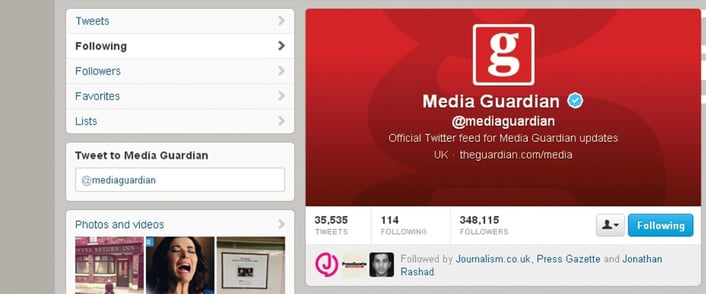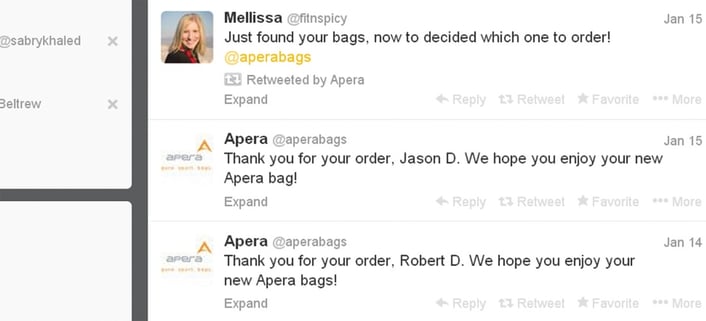 If you are using Twitter for business or promotion, you really need to establish a clear strategy. Working out your goals and how best to achieve them is the first step for any successful Twitter campaign.
If you are using Twitter for business or promotion, you really need to establish a clear strategy. Working out your goals and how best to achieve them is the first step for any successful Twitter campaign.
With advice taken from our upcoming book Everday Twitter, let our expert advice made easy help guide you on developing your business online.
Establishing Your Goals
Before you begin tweeting and following, it is worth establishing what you want to get out of Twitter. Your goals will affect the rest of your strategy, such as the type of people you will follow and the sort of content you will tweet about. All goals need to be realistic, achievable and measurable. For instance, if you would like 10,000 followers, set a deadline for when you want to achieve that number.
Twitter for Business
Your goals will affect how and why you use Twitter. Remember that Twitter is useful in several ways:
- Brand building: Twitter is perfect for raising brand awareness and boosting your profile.
- Customer engagement: Twitter can provide a platform for customer communication.
- Promotion: Twitter is ideal for announcing new products, news and information, as well as bringing traffic to your website.
Research
Once you know what you want out of Twitter, you need to do your market research to find out what it is that your customers want from you. In order to give customers what they desire, you need to ask what is important to them.
- Buying influence: Ask your customers what encourages them to buy products from companies such as yours. Is it price, quality or something else?
- Reputation: Before you begin using Twitter to boost your brand, you need to establish what people already think about you. Are there things you need to address? What are your strengths and weaknesses?
- Competition: Do not just enquire about yourself; ask how people perceive your competition. Establish what they are doing that you are not.
Identify Your Community
Another aspect you need to identify in your research is who your community is. This should not just be your potential customers, but also other people in your industry who may be worth following. If you engage with people on these platforms, it could encourage them to follow you on Twitter.
- Hot Tip: In order to assist in your market research, you can include a form on your website for customers to complete.
Promoting Your Twitter Profile
You cannot expect people suddenly to stumble upon your Twitter profile; you need to let them know that you are on there. This may mean including your Twitter details on your website, blog or even your correspondence to customers and suppliers. Some businesses include their Twitter handle with the rest of their contact details, as many people now prefer using social media rather than email or other traditional forms of communication.
All big companies, such as Tesco, have Twitter buttons on their websites
Following
Your goals will affect the types of accounts you will follow on Twitter and you need to be selective. People may judge you by the accounts you follow, so do not just follow anybody. This is even more crucial when you start, as it takes time to build up a list of people to follow and people will often look at who you follow to see if you are worth following. Following pop stars or humorous tweeters may not set a good impression with your potential customers.
Who to Follow
For businesses, you want to restrict the people you follow to several categories:
- Customers: When customers follow you, following them back provides positive engagement.
- Business associates: Partners, suppliers and contractors all make for good people to follow.
- Trade organizations: Following professional bodies associated with your industry is a good way to keep up to date with new rules and guidelines.
- Professional network: Following people you know who run other businesses, even in different fields, can also be useful.
- News outlets: Information can be gleaned by following trade journals or websites associated with your industry.
Respected news outlets can be a good way of finding suitable people of organisations to follow
Twitter Content
The next stage in any Twitter strategy is to work out the type of content you will be sending out. When you plan the sort of things you are going to say on Twitter, take into account your goals as well as what people want to hear. This can often mean a balancing act between promotional content and information that is useful to your followers.
- Hot Tip: It can often be a good idea to come up with a communication plan. Work out the topic areas you are going to tweet about, and include when and how often you will write about each topic.
Focusing Content
Generating content that is both beneficial for a business and useful to followers can be difficult. It often means trying to come up with tweets that cover several aspects:
- Positivity: Your tweets should always show your business in a positive light. If somebody tweets something negative about your company, such as a complaint, try to address the concerns openly and honestly.
- Benefits: Try to tweet content that will prove helpful for your followers. When promoting, target those aspects of your products or services that could benefit your customers, i.e. low price, quality, convenience, etc.
- Engagement: Tweets should be engaging. Make sure that you are producing content that people will want to read.
- Useful: Make sure that your tweets provide useful information or answer specific questions put to you by customers.
Tweet Frequency
The next step to any Twitter strategy is working out how often you will tweet. Tweeting too often can lead people to regard your business as spamming Twitter, especially if all your messages are promotional. On the other hand, not tweeting enough will make people regard you as not worth following. However often you decide to tweet, try to maintain regularity. If you have decided to tweet three times a day, make sure that you stick to that number and try to send your messages out at the same times each day.
Scheduling
Your followers and customers should govern when you send out your messages. If most of them are active during the day, then that is the best time to tweet. However, if you find that your followers are tweeting mainly in the evening, you will want to send out your tweets at that time too. Of course, you do not have to spend all evening on Twitter, as you can use various Twitter clients to schedule your tweets so that they hit the Twittersphere at the right time.
Twitter Account Manager
Your Twitter strategy should also include who will be sending tweets. As you should stick to your Twitter strategy, and tweet on set topics, it is often a good idea to appoint somebody to oversee your Twitter use. If you have several people tweeting, your Twitter account manager can check that everybody is sending out the right type of content and that you have the right mix of promotional and useful tweets.
- Hot Tip: Twitter is a public space, so you may not want to use it to give financial quotes or take personal information from people, but you can take advantage of direct messages or use it for initial contact with potential customers.
Work-based Twitter Culture
Since Twitter is about engagement and communication with your customers, it is a good idea to encourage employees to use the platform as a means of interaction. Twitter can be used alongside other means of communication, such as the telephone or email, for sending messages to customers, answering queries and helping to address problems.
You can use Twitter to thank your customers directly for their loyalty, or inform them of special offers
Twitter Training
If you are going to implement Twitter as part of your work culture, it is important that all employees are familiar with how it works, its benefits and its disadvantages. Simply letting your workforce loose on Twitter without adequate training or supervision could lead to problems, such as somebody unwittingly divulging sensitive information to the Twittersphere. Twitter training is therefore important to ensure that all employees know how best to use the social media platform.
Flexibility
No matter how well you plan your Twitter strategy, things may not work out how you expected, meaning that you need to be flexible. Make regular assessments of your Twitter strategy. If you have not managed to get the followers you hoped for, or your tweets are not being effective at drawing traffic to your website, think about changing tactic, especially with the type of content you are putting out.
Links
-
Learn more about social media trends via this trendy graph gallery
-
Twitter is just one of many useful websites; have a look at 7 essential social tools for your business here
-
Learn from the mistakes of your forebearers by checking out these 13 epic fails by big brands.








